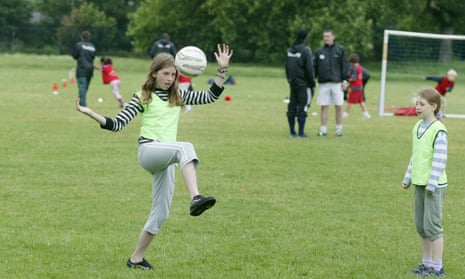I can hear the roar already from the football fraternity for what I am about to say, but hear me out. Maybe it’s time for head-safety gear for footballers – particularly children. The alternative being discussed is to stop youngsters from heading the ball altogether, but that would not safeguard against the moment that a ball comes tantalising close at head height.
A study carried out by the University of Stirling has identified that heading a ball can significantly impair brain function and memory. The researchers found inhibitory and cognitive changes in the brain after players headed the ball 20 times. Memory function fell by up to a staggering 67% in the 24 hours after heading practice, before normalising
This suggests that students playing football the day before exams would be better off not heading the ball frequently. The study’s co-author, the neuropathologist Dr Willie Stewart, has advised parents to consider letting children miss football training ahead of important tests.
We already have codes of practice within football and rugby that take concussion seriously. It’s now time to take on the effects on the brain of frequent knocks and bangs to the head during a football match. The Stirling study – the first to detect direct changes in the brain after heading the ball – has outlined something that not even the researchers themselves were expecting to find: heading sessions could halve memory function for a day.
It’s still not yet known if repeated exposure to headers could have long-term consequences, but the Football Association is planning further studies.
There is already concern at the potential link between brain diseases such as dementia and sport. Researchers have already stated that they feel such brain changes following repeated headers are significant to brain health. An estimated 270 million people around the world play football: could that be 270 million people predisposed to developing dementia? In order to protect them it is imperative to know what risks they are exposed to, in both the short and long term.
The incidence of brain disease is increasing globally, and the onset is in some cases occurring at ever younger ages. We still are nowhere near a definite cure, so preventative measures against scientifically established causes and links are our best weapon currently. The findings of this study should therefore lead to action.

One British case where a coroner specified that the brain disease suffered by a professional footballer was due to heading what was then a leather ball – calling it an “industrial disease” – is that of Jeff Astle, a striker for England, West Bromwich Albion and Notts County. He died at the age of 59 from brain trauma in 2002, after developing early-onset dementia. After his death, Astle’s brain was found to show evidence of chronic traumatic encephalopathy, which had been found in deceased boxers and players of American football and rugby.
In the US there is a ban on under-11s heading the ball, something that Gordon Smith, the former Scottish Football Association chief executive, has suggested his country should consider. But he admits that, even with the latest knowledge, he would still play the same way. “I think if I was given the choice to play again with the scenario that you were heading the ball and it could do some sort of damage, I would still agree to play.”
So is it enough to simply attempt a ban? We wear head protection for riding bikes, we put them on the heads of the wee ones on the ski slopes, we strap on helmets when rock climbing. So is it really a step too far to design and then require the wearing of protective headgear, particularly for youngsters?
The results of this study are clear. We still do not know the long-term effects, but the door is open now for further research to look into this. As football’s governing bodies work together with science to look into new approaches for detecting, monitoring and preventing cumulative brain injuries in the beautiful game, one question remains. How is the long-term health of football players at all levels and ages going to be safeguarded?
This is a question that Jeff Astle’s daughter, Dawn Astle, asks too. “Would I be surprised if damaging effects of heading are found? No. The question is: what are they doing to do about it? What are the authorities going to do to protect our children?”
Let’s accept the science and think about headgear.
